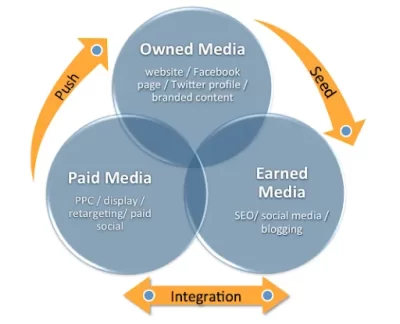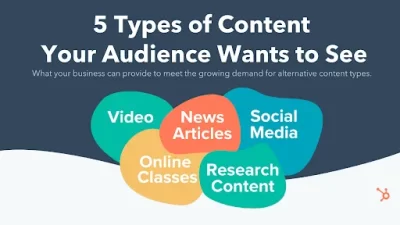Simple as it might look, the content distribution goes beyond mindless posting. Companies have dedicated teams of marketers and content creators to ensure the strategy is productive and brings positive changes to the brand. If it were that effortless, would enterprises hire additional staff to deal with content distribution? Exactly, they wouldn’t. Yet they do, paying close attention to content generated under their brand name. In this article, we’ll define the content distribution and its types, provide thriving platforms for spreading content, and walk through the steps to ensure produced content achieves the established goals.
Table of Contents
Content distribution: definition, types, channels
Content distribution is a multi-step strategy centered around generating, publishing, and promoting content. Every successful piece of content undergoes several stages, from analyzing social media channels to examining the niche and competitors, deciding on the content type, and so forth until the post rolls out.
When it comes to content distribution types, they can manifest in numerous forms. Typically, we come across blog posts, infographics, email newsletters, videos, podcasts, and surveys. The choice of type will depend on what your research shows. If your study highlights that users prefer to read moderate (size-wise) posts, you will prioritize this format in your content calendar and marketing campaign.
Content can be distributed via these three funnels:
- Owned. A company page is a common source for publishing and distributing content. Using the corporate page underscores your authority in the field and makes the enterprise competent. However, to draw the necessary attention, it’s imperative to brand the page (whether a blog section, social media profile, or email newsletter) accordingly.
- Earned. The higher your reputation, the higher the odds others will refer to your blog, making content distribution fall under the earned channel. Here, you don’t have to put effort into spreading your content, as others will be doing that for you. But you first need to earn it, which brings us to the final channel type.
- Paid. Paid channel types include native ads, sponsored posts, and Pay-Per-Click advertising, among other things. Turning to the paid type is necessary regardless of your brand’s success. Some companies rely less on it, while others invest more resources, especially before essential releases. The good thing is that you don’t need to spend a fortune to attract people through paid channels. All you have to do is ensure such ads move people to act. So how do you do that? By text and image. Whatever your message to the public is, couple it with visuals. Here are some stunning VistaCreate ideas to get your creative juices flowing and come up with something eye-popping and memorable.

Platforms for effective content contribution

While many more platforms for content distribution exist, with their profitability ranging by a host of factors, the following is a breakdown of standard and widely used networks:
- Social media networks: Twitter, LinkedIn, Instagram, Facebook, TikTok
- Video platforms: YouTube
- Blog-oriented sites: Medium
- Visual-focused pages: Pinterest
- Podcast distribution: Spotify, Google Podcast, SoundCloud
Steps to practical content distribution
Coming up with content and publishing and advertising it next is a common pitfall of multiple brands. It’s a big no-no if you strive to make your content distribution meaningful, valuable, and lucrative. One of the most significant issues is that companies often try to make the most of their content without approaching it correctly. So, what is the correct method? Below is a five-step strategy to help you build, distribute, and benefit from your content.
- Audience research
Researching the audience touches upon many aspects, so narrowing it is the first thing to do. It’s best to understand what content your followers like and react to most vigorously and often. On which channels are people the most enthusiastic? Do they enjoy your videos, reels, or long-reads? What topics do they usually respond to? Don’t hesitate to roll out brief surveys asking people to answer questions that will help you better understand what content they appreciate seeing. And finally, remember to learn about your competitors and their content strategy. It will give you an extra sense of what to focus on when working on content.
2. KPI set up
The Key Performance Indicator (KPI for short) is the term every marketer is well aware of. KPIs are excellent because they allow you to plan. Whether you want to boost sales or reach more people, the KPI will help you decide on the kind of content and distribution channel. Remember to make your objectives Specific, Measurable, Attainable, Realistic, and Time-bound.
3. Content formation
Now that you know your KPIs and prioritized content, it’s time to assemble this information and create a calendar and schedule. Like the preferred content type, people have a defined period when they run social media. Ensure to learn the timing to ensure more people explore your content.
4. Content distribution
Upon completing the third step, you’ve got everything to start distributing content. We encourage you to start slowly but steadily because it will let you track your progress.
5. Stat measurement, assessment, and improvement
Nothing is perfect, and neither is your content distribution strategy. It’s OK; just keep a close eye on stats and metrics instead of getting discouraged by not seeing the expected performance. Analyzing the strategy will help you learn the upsides and downsides and make the following content distribution practices more efficient.
Content distribution is an effective way to increase recognition and illuminate your expertise in the area you operate. After all, coming up with a strategy isn’t difficult. Use the provided guide, and you’ll reap the benefits real quick.



















